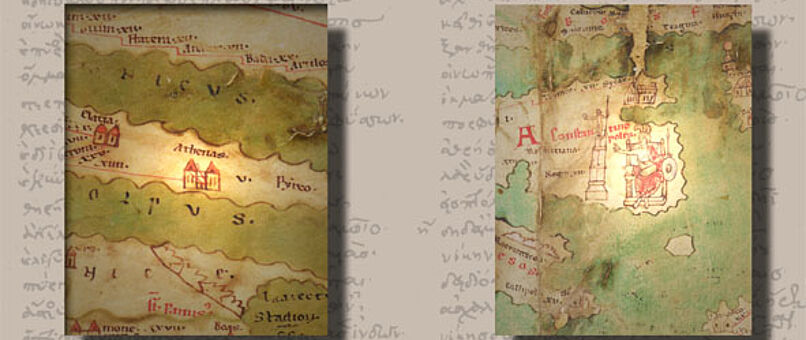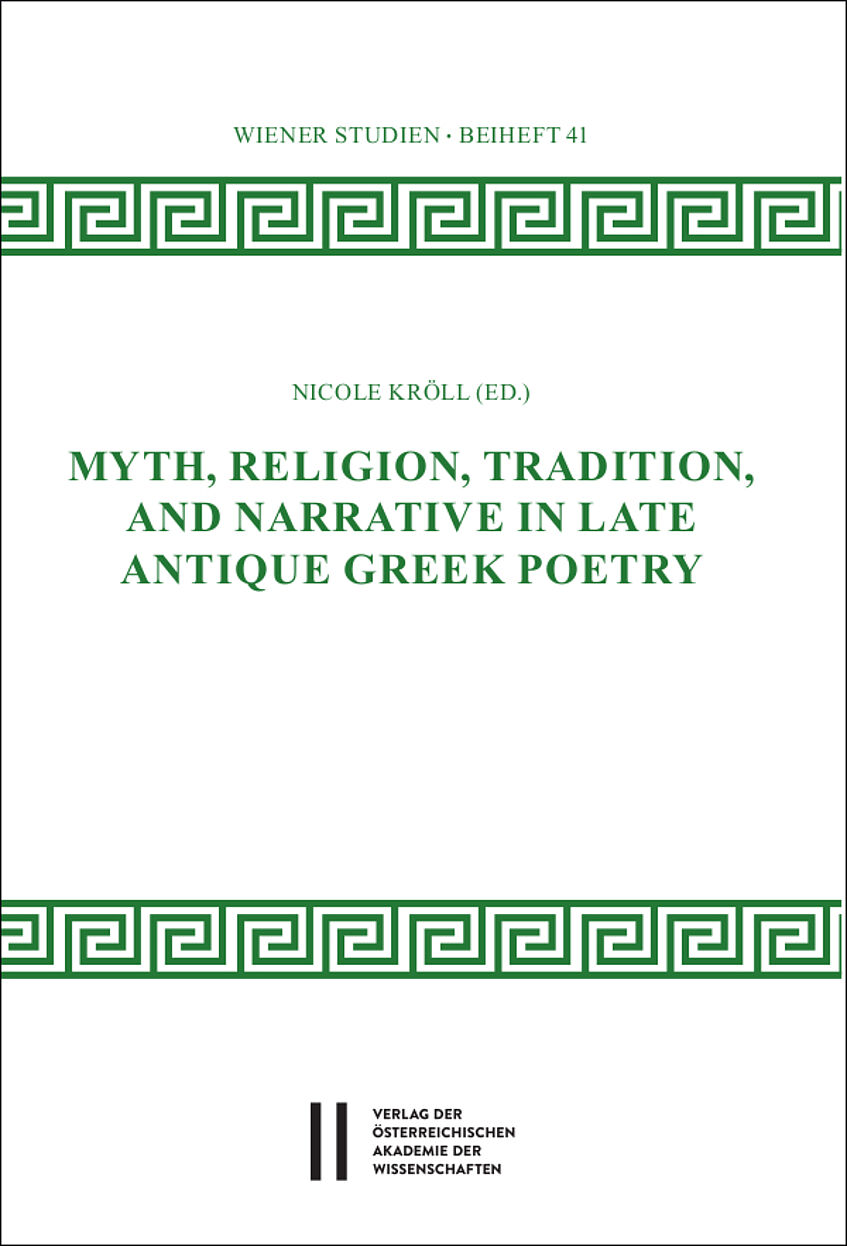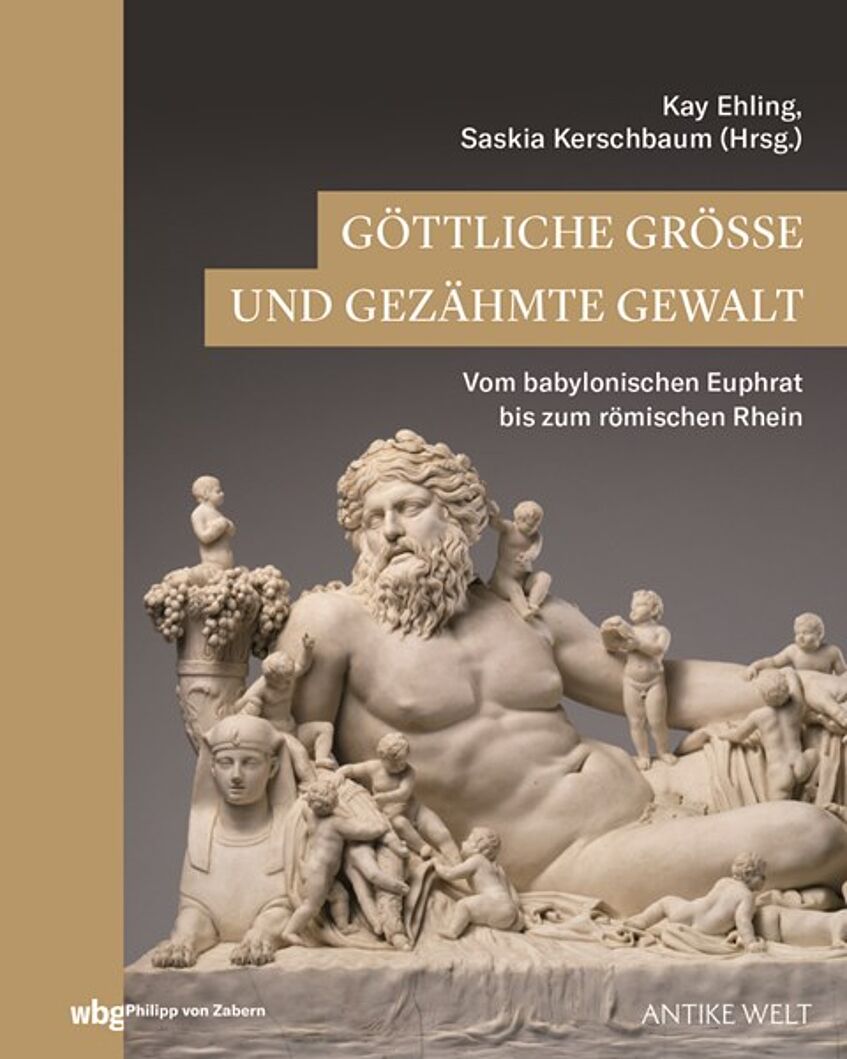Digressions in late antique Greek historiography
Mag. Dr. Nicole Kröll, BA MA
Funded by the Austrian Science Fund (FWF)
Grant DOI 10.55776/PAT9556924
runningtime: 2025-2029
https://www.fwf.ac.at/en/research-radar/10.55776/PAT9556924
By delivering a literary analysis of the different forms and narrative functions of digressions in Greek historiographical works from the 5th to 7 th century CE, the project will fill a significant research gap in the field of literary studies on late antique Greek historiography. The subject of the study will be digressions and episodic writing modes in selected works of four ‘classicising’ historiographers –Zosimus, Procopius, Agathias and Theopylact Simocatta– and the chronicle writer John Malalas, who all focus on the history of the Roman empire, as well as five authors who write ecclesiastical history –Socrates, Sozomen, Theodoret of Cyrrhus, Philostorgius and Evagrius Scholasticus. This will result in a project that examines works that have been traditionally considered separately or that have rarely been studied at all from a philological perspective and with regard to a distinct narrative technique.
By conducting a literary case study, the project aims to gain a comprehensive understanding of the literary aesthetics of late antique Greek historiography and to identify the specific social and cultural environment in which these literary works were created.
Save the date: Workshop

Save the date: Workshop
Digressive Storytelling in Historiography and Prose Literature of (Late) Antiquity
From Athens to Constantinople VI: Late Antique and Byzantine Literature in Context
23 and 24 March 2026
Institute for Classical Philology, Medieval snd Neo-Latin Studies, University of Vienna, Austria
Organisation: Dr Nicole Kröll
The international workshop discusses forms and functions of digressions and digressive storytelling in Hellenistic, Late Antique, and Byzantine works of historiography and biography.
Full list of publications by Nicole Kröll
File size: 173 kB
Selected publications by Nicole Kröll
History
Visitation protocols - VIPO - digital edition
Visitation protocols - VIPO - digital edition
Brill Scholarly Editions
Digital edition of the monograph "Visitationsprotokolle im Kontext frühneuzeitlicher Konfessionalisierungsprozesse: Die bischöfliche Visitation de sJahres 1582 in Pfarren im Wiener Umland"
Quelleneditionen des Instituts für Österreichische Geschichtsforschung 22 (2024)
This publication has been made possible by the Austrian Science Fund (FWF), PUD23
The edition of the visitation protocols of the rural parishes around Vienna provides an insight into the complex confessional situation in Vienna in the 1580s. In August 1582, Bishop Johann Caspar Neubeck of Vienna had a visitation carried out in order to examine the confessional attitude of the parish priests and the economic situation of the parishes. The aim was to implement the Catholic doctrine and practice of faith as standardised at the Council of Trent. By placing the text in its historical and confessional context, the little-researched phase before the onset of major counter-reformation measures in Austria below the Enns and Vienna is illuminated.
Monograph
Monograph
Visitationsprotokolle im Kontext frühneuzeitlicher Konfessionalisierungsprozesse: Die bischöfliche Visitation des Jahres 1582 in Pfarren im Wiener Umland
Wien-Köln: Böhlau-Verlag 2024, 144 S.
Quelleneditionen des Instituts für Österreichischen Geschichtsforschung 22 (2024), 144 S.
Open access publication
ISBN: 978-3-205-22041-1
The edition of the protocol documenting the visitation of rural parishes in Vienna provides insight into the complex confessional landscape of Vienna in the 1580s. In August 1582, the Viennese bishop Johann Caspar Neubeck initiated a visitation to assess the confessional stance of the parish priests and the economic conditions of the parishes. The aim was to implement Catholic doctrine and practices as standardized by the Council of Trent. By contextualizing the text within its historical and confessional framework, this study sheds light on the little-researched period preceding the onset of major Counter-Reformation measures in Lower Austria and Vienna.
Contribution in collected volume
Contribution in collected volume
Im Spannungsfeld zwischen Kirche und Politik. Die Erzdiözese Wien im 19. und 20. Jahrhundert
In: Günther Buchinger - Johanna Kößler (Hrsg.), Das erzbischöfliche Palais in Wien. Vom Pfarrhof zur Residenz der Kardinäle, Wien: Dom Verlag 2024, S. 149-176.
ISBN 978-3-85351-334-7
Drawing on selected archival materials from the Archives of the Archdiocese of Vienna, the article discusses the relationship between the Catholic Church in Vienna and political developments and trends during the 19th and 20th centuries.
Contribution in collected volume
Contribution in collected volume
Reformation und katholische Konfessionalisierung. Die Erzdiözese Wien im 16. und 17. Jahrhundert
In: Günther Buchinger - Johanna Kößler (Hrsg.), Das Erzbischöfliche Palais in Wien. Vom Pfarrhof zur Residenz der Kardinäle, Wien: Dom Verlag 2024, S. 51-62
ISBN 978-3-85351-334-7
Using selected archival materials from the Archives of the Archdiocese of Vienna, the article explores the history of the Archdiocese of Vienna in the context of Reformation and Counter-Reformation in the 16th and 17th centuries.
George of Pisidia
Journal Article
Kröll, Nicole, "Introduction" to the Cluster on George of Pisidia
Overview on the poetry of George of Pisidia, current state of research and introduction to the cluster contributions:
Nicole KRÖLL, Introduction
Alice COSME, “Ποίαν γλώττης οὐκ ἐκίνησεν λύραν;” Poetic Style and Diction in the Bellum Avaricum of George of Pisidia
Anna Maria TARAGNA, Leo Choirosphaktes, Reader of George of Pisidia. Notes on the Language and Style of the So-Called Thousand-Line Theology
Nadine VIERMANN, Merging Supreme Commander and Holy Man. George of Pisidia’s Poetic Response to Heraclius’ Military Campaigns
Mary WHITBY, The Patriarch Sergius and the Theotokos
Journal article
Anales de filología clásica (Buenos Aires): La narración en Bizancio. Perspectivas narratológicas sincrónicas y diacrónicas
Journal article
Kröll, Nicole, “Constructing Order through Narration: Narrator and Narratees in George of Pisidia’s Bellum Avaricum”, Anales de Filología Clásica 33.2 (2020), 75–86.
doi: 10.34096/afc.i33.10017
The object of the paper is to analyse the roles of the narrator and the narratees in George of Pisidia’s Bellum Avaricum. The article puts forth the hypothesis that through the hierarchic relationship of narrator and narratees, the poet aims at mirroring the ideal form of kingship under the Christian emperor Heraclius (reg. 610-641 C.E.) both on a secular and spiritual level.
Nonnus of Panopolis and other late antique poets
Edition of collected volume
Edition of collected volume
Kröll, Nicole, ed. Myth, Religion, Tradition, and Narrative in Late Antique Greek Poetry (Wien 2020, Wiener Studien Beihefte 41), 240 S., broschiert.
ISBN 978-3-7001-8584-0 (print)
ISBN 978-3-7001-8814-8 (digital)
doi:10.1553/0x003bd7ee
The volume shows the manifold themes of Greek poetry in Late Antiquity. Pagan and Christian concepts merge in the works of Nonnus of Panopolis and in the “Ekphrasis” of John of Gaza, the poems of George of Pisidia are read against the background of late antique philosophy and the autobiographies of Gregory of Nazianzus as literary forms of expression. The ekphrastic narrative techniques of Quintus Smyrnaeus and the composition of characters in Colluthus are analyzed, and Lycophron is proved as another source of Nonnus’ “Dionysiaka”. The contributions also deal with mythological characters, cyclopes and elephants, and late antique epigrammatic poetry is contextualized in the cultural and literary environment of the time.
Contributors: Domenico Accorinti, Herbert Bannert, Ursula Gärtner, Marcelina Gilka, David Hernández de la Fuente, Nicole Kröll, Delphine Lauritzen, Frederick Lauritzen, Arianna Magnolo, Andreas Rhoby, Jan R. Stenger, Mary Whitby.
Journal Article

Journal Article
Καὶ Στάφυλον Διόνυσος ἀεὶ ζώοντα τελέσσει. Das Lied des Oiagros bei den Leichenspielen im 19. Buch der Dionysiaka des Nonnos von Panopolis
Wiener Humanistische Blätter 66 (2025), 7-44
The article examines the song contest between Oiagros and Erechtheus in Book 19 of the Dionysiaca and explores the question of why Oiagros wins allthough performing only a very brief song.
Paper in collected volume
Paper in collected volume
Kröll, Nicole. "Shape Shifting Athena? On the Transformation of Homeric Characters in Nonnus' Dionysiaca".
In: Berenice Verhelst (ed.), Nonnus of Panopolis in Context IV: Poetry at the Crossroads (Leuven: Peeters Publishing 2022, Orientalia Lovaniensia Analecta 314. Bibliothèque de Byzantion 29), 77-102.
The contribution seeks to answer the question whether Nonnus sketches the characters who appear already in Iliad and Odyssey as a Homeric blueprint or rather transforms them into Dionysian shape-shifters in order to meet the special requirements of his own narrative code. Therefore, Athena’s character traits will be dealt with, which can be traced both on the level of the narration realised by the narrator himself and on the secondary level of character speech.
Paper in collected volume
Paper in collected volume
Kröll, Nicole, "Flüsse in den Dionysiaka des Nonnos von Panopolis".
In: Kay Ehling - Saskia Kerschbaum, eds., Göttliche Größe und gezähmte Gewalt. Flüsse vom babylonischen Euphrat bis zum römischen Rhein, Darmstadt: Wissenschaftliche Buchgesellschaft 2022 (Zaberns Bildbände zur Archäologie, Sonderbände der Antiken Welt), 79-85.
In his Dionysiaca, a 48-book Greek epic, Nonnos of Panopolis narrates the birth and life of the wine god Dionysus. Several rivers and streams of the eastern Mediterranean and of the Middle East play a vital role for the narration of this comprehensive epic.
ISBN 978-3-8053-5341-0
Journal article











